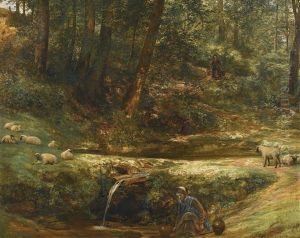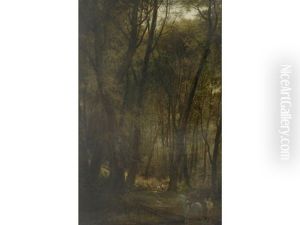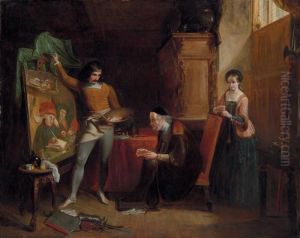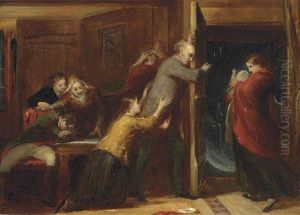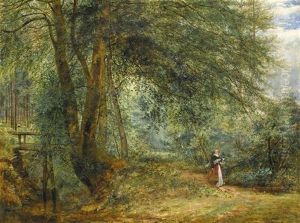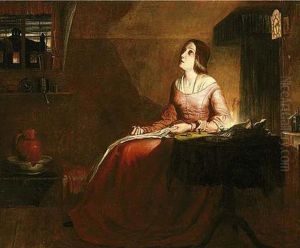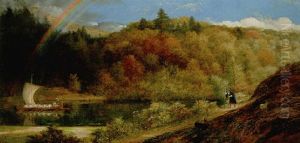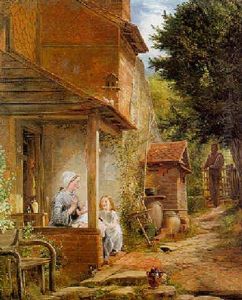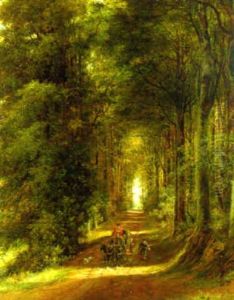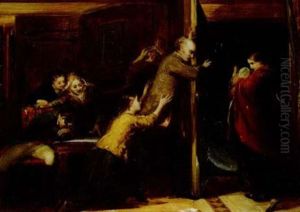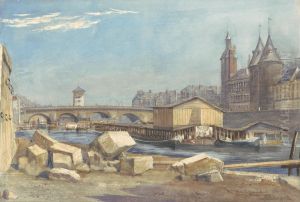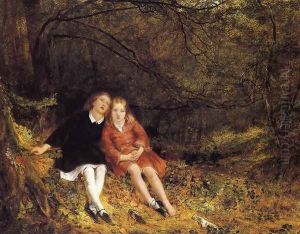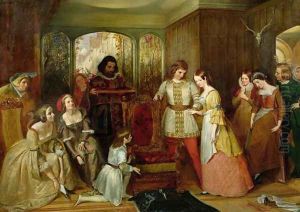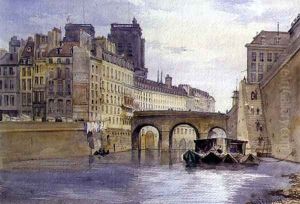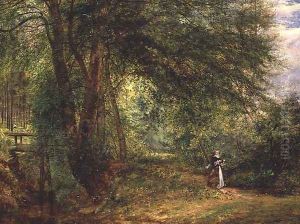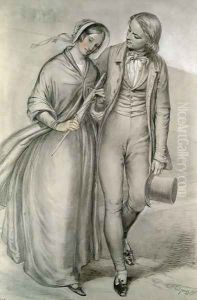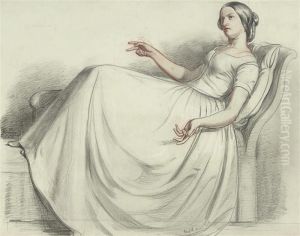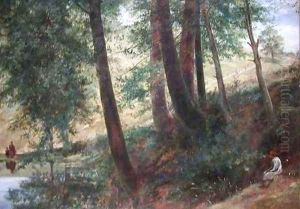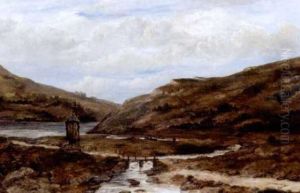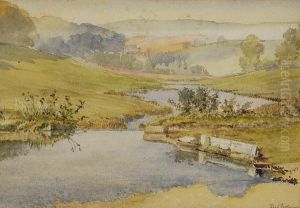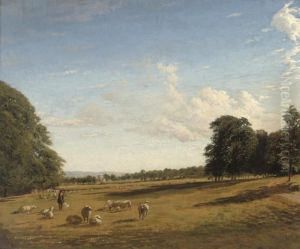Richard Redgrave Paintings
Richard Redgrave was an influential British artist, administrator, and educator in the 19th century. Born on April 30, 1804, in Pimlico, London, he was part of a family with a strong connection to the arts; his brother, Samuel Redgrave, was also involved in the art world, notably as an art historian.
Redgrave initially trained as a civil engineer, but his passion for art led him to switch careers. He began studying at the Royal Academy Schools in 1826, where he developed his skills in painting. Redgrave's early works were mainly landscapes, but he soon moved towards genre painting—scenes of everyday life—often with a moral or social message.
During the 1830s, Redgrave's career started to gain momentum. His painting 'The Poor Teacher' exhibited in 1836, received much acclaim. Redgrave was elected an associate of the Royal Academy in 1840 and a full Royal Academician in 1851. His artistic work included a wide range of subjects, from landscapes and genre scenes to historical and literary subjects.
Beyond painting, Redgrave took a significant interest in the administration of the arts. He was appointed Surveyor of Crown Lands and Her Majesty's Inspector of Government Art Schools in 1851, reflecting his growing importance in the British art establishment. Redgrave played a crucial role in the development of art education in Britain, advocating for the importance of design in industry and helping to establish the South Kensington Museum, which later became the Victoria and Albert Museum.
Redgrave's contributions to art education and administration were recognized in his lifetime. He was knighted in 1866 for his services to arts education. His later years were spent writing and continuing his work in art administration. Richard Redgrave passed away on December 14, 1888, but his legacy lives on through his contributions to the British art world, both as a painter and as an educational reformer.








